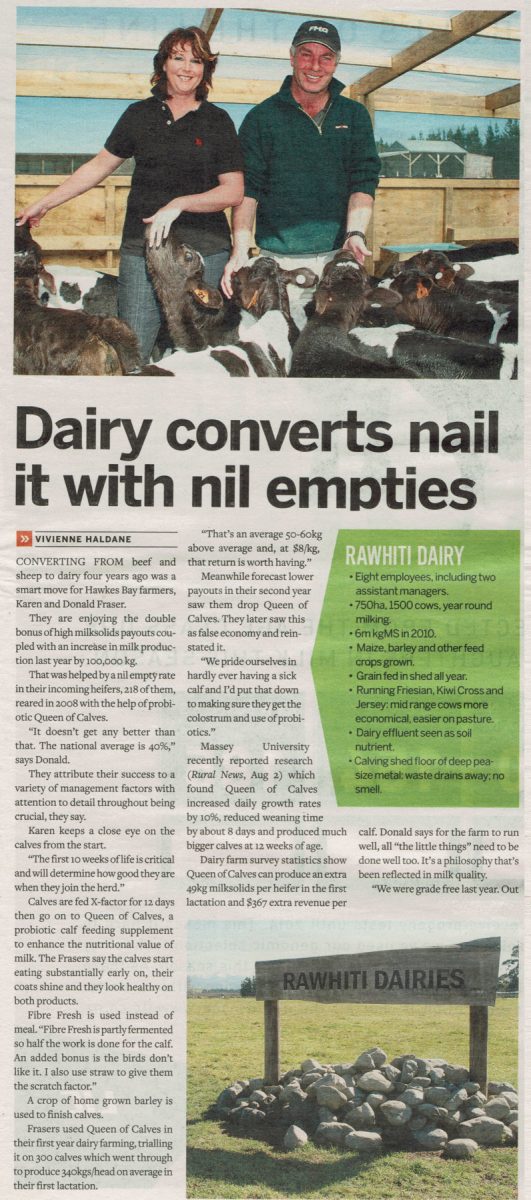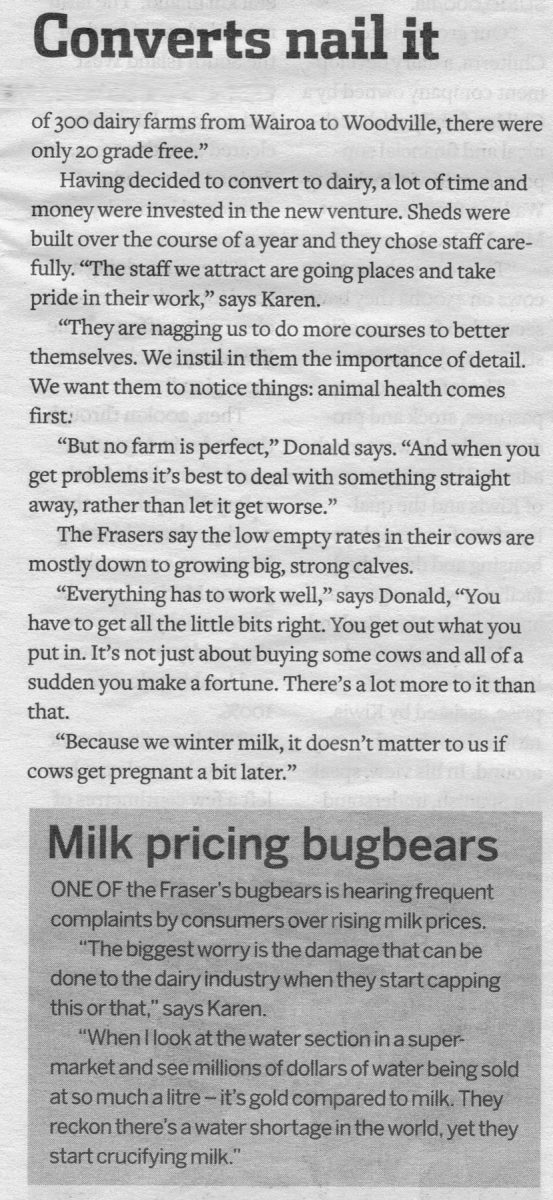Dairy converts nail it with nil empties
VIVIENNE HALDANE
CONVERTING FROM beef and sheep to dairy four years ago was a smart move for Hawkes Bay farmers, Karen and Donald Fraser.
They are enjoying the double bonus of high milk solids payouts coupled with an increase in milk production last year by 100,000 kg.
That was helped by a nil empty rate in their incoming heifers, 218 of them, reared in 2008 with the help of probiotic Queen of Calves.
“It doesn’t get any better than that. The national average is 40%,” says Donald.
They attribute their success to a variety of management factors with attention to detail throughout being crucial, they say.
Karen keeps a close eye on the calves from the start.
“The first 10 weeks of life is critical and will determine how good they are when they join the herd.”
Calves are fed X-factor for 12 days then go on to Queen of Calves, a probiotic calf feeding supplement to enhance the nutritional value of milk. The Frasers say the calves start eating substantially early on, their coats shine and they look healthy on both products.
Fibre Fresh is used instead of meal. “Fibre Fresh is partly fermented so half the work is done for the calf. An added bonus is the birds don’t like it. I also use straw to give them the scratch factor.”
A crop of home grown barley is used to finish calves.
Frasers used Queen of Calves in their first year dairy farming, trialling to produce 340kgs/head on average in their first lactation.
“That’s an average 50-60kg above average and, at $8/kg, that return is worth having.”
Meanwhile forecast lower payouts in their second year saw them drop Queen of Calves. They later saw this as false economy and reinstated it.
“We pride ourselves in hardly ever having a sick calf and I’d put that down to making sure they get the colostrum and use of probiotics.”
Massey University recently reported research (Rural News, Aug 2) which found Queen of Calves increased daily growth rates by 10%, reduced weaning time by about 8 days and produced much bigger calves at 12 weeks of age.
Dairy farm survey statistics show Queen of Calves can produce an extra 49kg milk solids per heifer in the first lactation and $367 extra revenue per calf. Donald says for the farm to run well, all “the little things” need to be done well too. It’s a philosophy that’s been reflected in milk quality.
“We were grade free last year. Out
RAWHITI DAIRY
Eight employees, including two assistant managers.
750ha, 1500 cows, year round milking.
6m kgMS in 2010.
Maize, barley and other feed crops grown.
Grain fed in shed all year.
Running Friesian, Kiwi Cross and Jersey: mid range cows more economical, easier on pasture.
Dairy effluent seen as soil nutrient.
Calving shed floor of deep pea-size metal: waste drains away; no smell.













Do you know something about this record?
Please note we cannot verify the accuracy of any information posted by the community.